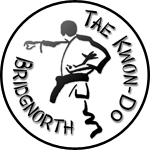Bridgnorth Tae Kwon-Do: Required Theory: 4th Kup: Blue Belt to Red Stripe
Alongside your practical martial arts tuition at Bridgnorth Tae Kwon-Do, students are expected to learn theory and this is tested at the end of every grading. The emphasis is on the student to take responsibility for their own learning; but we have provided these theory sheets to assist and we are always happy to help with your learning or any questions you may have. In terms of timing for when is best to start your theory, we would always say ASAP! It is never too early or too late to start – the main thing is to give it your best effort in a way that suits you. Some students have created their own visual aids, drawn pictures, found ways to memorise dates, etc. No doubt you will learn more than the examiner will test you on – please don’t be disheartened by this. Your time spent on theory is never wasted. You need to know this information to perform at the highest level in the class; and you will be tested on all aspects of the syllabus from white belt onwards, during your Black Belt gradings.
(Korean terms are in brackets and italics).
Significance of Colours on Belts
BLUE signifies the heaven towards which the plant matures into a towering tree as Tae Kwon-Do training progresses.
RED signifies danger, warning the student to exercise self-control and the opponent to stay away.
Movements
- Closed ready stance B: (Moa Junbi Sogi B)
- Rear foot stance: (Dwitbal sogi)
- Low stance: (Nachuo sogi)
- Fixed stance: (Gojung sogi)
- Middle section reverse knife hand: (Kaunde sonkal dung makgi)
- Middle section upward palm block: (Kaunde ollyo sonbadak makgi)
- Rising X fist block: (Chookyo kyocha makgi)
- U shape (stick) block: (Digutja (mungdungi) makgi)
- Twin palm pressing block: (Sang sonbadak noollo makgi)
- Upper elbow strike: (Wi palkup taerigi)
- Twin vertical punch: (Sang sewo jirugi)
- Twin upset punch: (Sang dwijibo jirugi)
- Turning punch: (Dollyo jirugi)
- Scooping block: (Duro makgi)
- Downward kick / axe kick: (Naeryo chagi)
Pattern Meaning
Joong-Gun is named after the patriot An Joong Gun who assassinated Hiro-Bimo-Ito, the first Japanese Governor-General of Korea and the man responsible for the Japan-Korea merger. There are 32 movements in the pattern which represent Mr An’s age when he was executed at Lui-Shung prison in 1910.
*** The GTI Handbook contains more detailed theory information and is available to purchase from your Instructor at Bridgnorth Tae Kwon-Do.
The examiner may ask any question, not limited to those on these pages.
You must ALWAYS revise theory from previous belts.***
